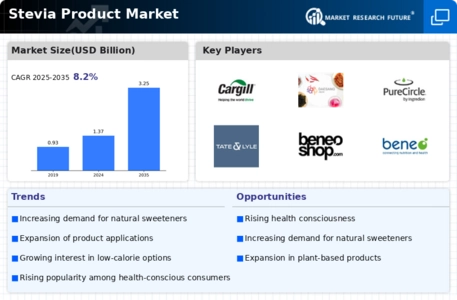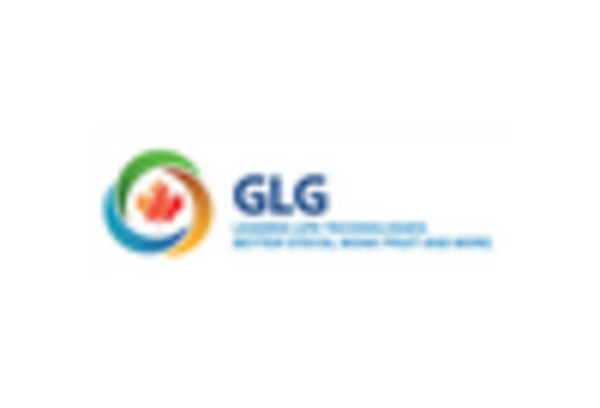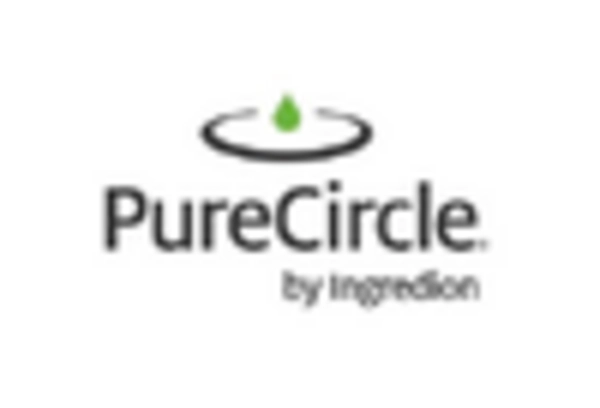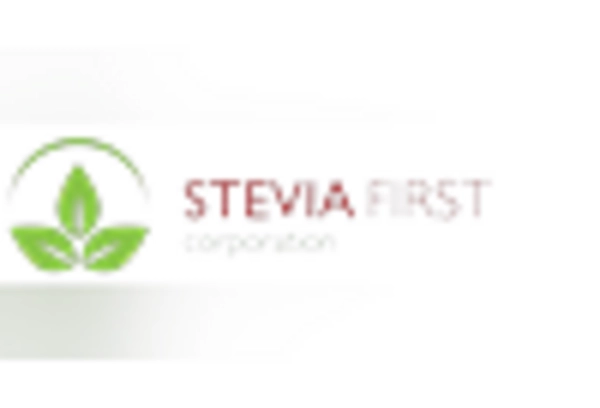Health Conscious Consumer Trends
The Stevia Product Market is experiencing a notable shift as consumers increasingly prioritize health and wellness. This trend is driven by a growing awareness of the adverse effects of sugar consumption, including obesity and diabetes. As a result, many consumers are actively seeking healthier alternatives, with stevia emerging as a preferred choice due to its natural origin and zero-calorie content. Recent data indicates that the demand for stevia-based products has surged, with a projected growth rate of approximately 8% annually over the next five years. This shift towards health-conscious choices is likely to propel the Stevia Product Market further, as manufacturers respond by expanding their offerings to include stevia-sweetened beverages, snacks, and other food products.
Regulatory Support and Consumer Awareness
Regulatory support for natural sweeteners is becoming increasingly evident, positively impacting the Stevia Product Market. Governments and health organizations are recognizing the benefits of stevia as a safe and effective sugar substitute, leading to favorable regulations that promote its use. This regulatory backing, combined with rising consumer awareness about the health risks associated with excessive sugar intake, is likely to bolster the demand for stevia products. As consumers become more informed about the advantages of stevia, including its natural origins and health benefits, the Stevia Product Market is expected to witness sustained growth, with more brands entering the market to meet this burgeoning demand.
Sustainability and Environmental Concerns
Sustainability has become a pivotal factor influencing consumer purchasing decisions, particularly within the Stevia Product Market. As environmental awareness rises, consumers are increasingly inclined to choose products that align with their values regarding sustainability. Stevia, being a plant-based sweetener, is perceived as a more environmentally friendly alternative to traditional sugar production, which often involves extensive land use and water consumption. The cultivation of stevia requires fewer resources, making it an attractive option for eco-conscious consumers. This trend is likely to drive growth in the Stevia Product Market, as brands that emphasize sustainable sourcing and production practices may gain a competitive edge in attracting environmentally aware consumers.
Expansion of Food and Beverage Applications
The versatility of stevia as a sweetener is contributing to its growing presence in various food and beverage applications within the Stevia Product Market. Manufacturers are increasingly incorporating stevia into a wide range of products, including dairy, baked goods, and sauces, to cater to the rising demand for low-calorie and sugar-free options. Recent market analysis suggests that the beverage sector, particularly soft drinks and flavored waters, is witnessing a significant uptick in the use of stevia as a sweetening agent. This expansion into diverse applications is likely to enhance the visibility and acceptance of stevia, further solidifying its position in the Stevia Product Market.
Technological Advancements in Extraction Processes
Technological advancements in the extraction and processing of stevia are playing a crucial role in shaping the Stevia Product Market. Innovations in extraction methods have led to improved purity and taste profiles of stevia products, making them more appealing to consumers. Enhanced extraction techniques not only increase the yield of steviol glycosides but also reduce production costs, thereby making stevia a more competitive alternative to sugar and artificial sweeteners. As these technologies continue to evolve, they are likely to facilitate the entry of new players into the Stevia Product Market, fostering increased competition and driving further innovation in product offerings.

















Leave a Comment